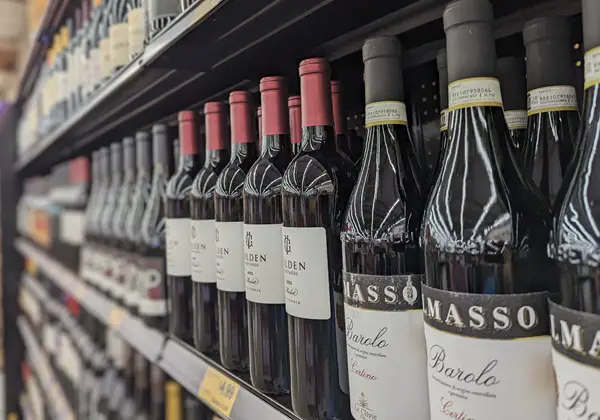
New wine drinkers are often inducted into the world of vino via sweet wine. This begs the question: How do you know if a wine is sweet?
Read the label for terms like ‘off-dry’ or a sweetness scale. Alcohol levels below 11% ABV indicate some sugar. Sweetness is measured in g/l (grams of sugar per liter). Dry wines have 2-4 g/l, and you’ll taste sweetness at 10 g/l. Port typically has around 100 g/l. You can also find sugar levels on wine technical sheets.
Whether a White Zinfandel, Boone’s Farm, or even [yellow tail] Shiraz, wines with a whisper of sugar – or maybe even a bold shout – appeal to new wine drinkers.
Here’s how to tell if a wine is sweet..
How to Tell If Wine Is Sweet: 4 Quick Tips
Tip 1: Checking the Label for Sweetness Indicators
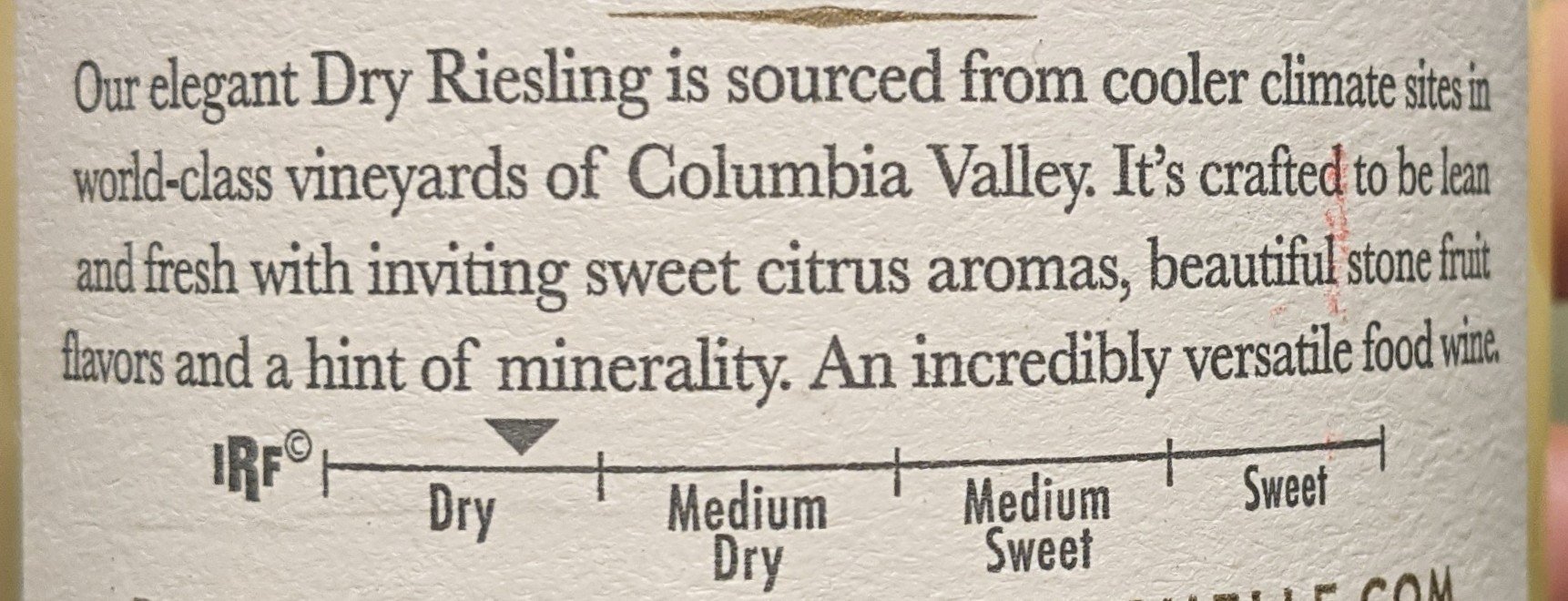
The first clues to what’s in your bottle is to look for sweetness scales on your bottle. Understanding the wine sweetness scale can be helpful in gauging the level of sweetness in a particular wine.
You can find sweetness indicators on the back of wine labels that have dry on one end and sweet anchoring the other.
Helpful Tip: If you want a sweeter tasting wine, look for wines that fall in the middle of the sweetness scale.
Tip 2: Look for Label Clues like “Off-dry”
Labels can be another clue, but you need to spend time reading them and the descriptions of the wine inside.
Helpful Tip: Label terms like “off-dry” and “medium-sweet” are clues that the wine has some sugar in it.
Tip 3: Look for Lower-Alcohol Wines Under 11% ABV
Wines with lower alcohol levels almost always have some sweetness in them. These are usually wines that didn’t ferment the juice completely. Look for alcohol levels under 11%.
Helpful Tip: Moscato d’Asti and Rieslings are great wines where lower alcohol means sweeter wines. If you see a label with 5.5% or even 8% ABV, you’re holding a wine that has perceptible sweetness in it. You’ll be able to taste the sugar.
Tip 4: Look for Wine Technical Sheets
Outside of label clues, you’re unlikely to know whether the wine you’re thinking about buying has residual sugar, so you’ll want to find the technical sheet.
A wine’s technical sheet is an informational sheet that includes all of the nerdy wine info for the wine you’re tasting (or thinking of buying).
Technical sheets often include things like the date of the harvest dates, the grapes included in a blend, fermentation vessels, whether the winemaker used ambient or cultured yeast, the length of fermentation, and different specifications for the maturation period – like stainless steel or French oak barrels.
Technical sheets include wine chemistry details, too, including pH, acidity, and – germane to this particular posting – residual sugar.
So, if you are determined to know what the residual sugar is in a wine, then look for the wine’s technical sheet.
Helpful Example: Here’s the technical sheet for Jam Jar wine.
You can find technical sheets on the producer’s website.
They’re mainly used for wine marketers, but also give helpful information for wine lovers looking to learn more about the wine they’re enjoying.
If you’re concerned about the sugar content in your wine, check out the producer’s website and look for the technical sheets that may have additional information on them.
How to Measure Wine Sweetness
The EU uses the following labeling terms to help categorize wines.
Here’s a rough breakdown of sweetness levels:
- Dry: Less than 4 g/l residual sugar
- Off-dry: 4 – 12 g/l residual sugar
- Medium-sweet: 12-45 g/l residual sugar
- Sweet: 45+ g/l residual sugar
German Labeling
- Troken (dry): Less than 4 g/l residual sugar
- Halbtroken (off-dry): 4 – 12 g/l residual sugar
- Lieblich (medium-sweet): 12-45 g/l residual sugar
- Süess (sweet): 45+ g/l residual sugar
Different wines exhibit varying levels of sweetness, ranging from bone-dry to slightly sweet. Dry wines typically have minimal residual sugar, while off-dry wines have a touch of sweetness.
Helpful Tip: Here’s how much sugar’s in your Champagne wines.
Factors Affecting Perceptions of Sweetness in Wine
Flavors in Wine that Make it Taste Sweet (Besides Sugar)
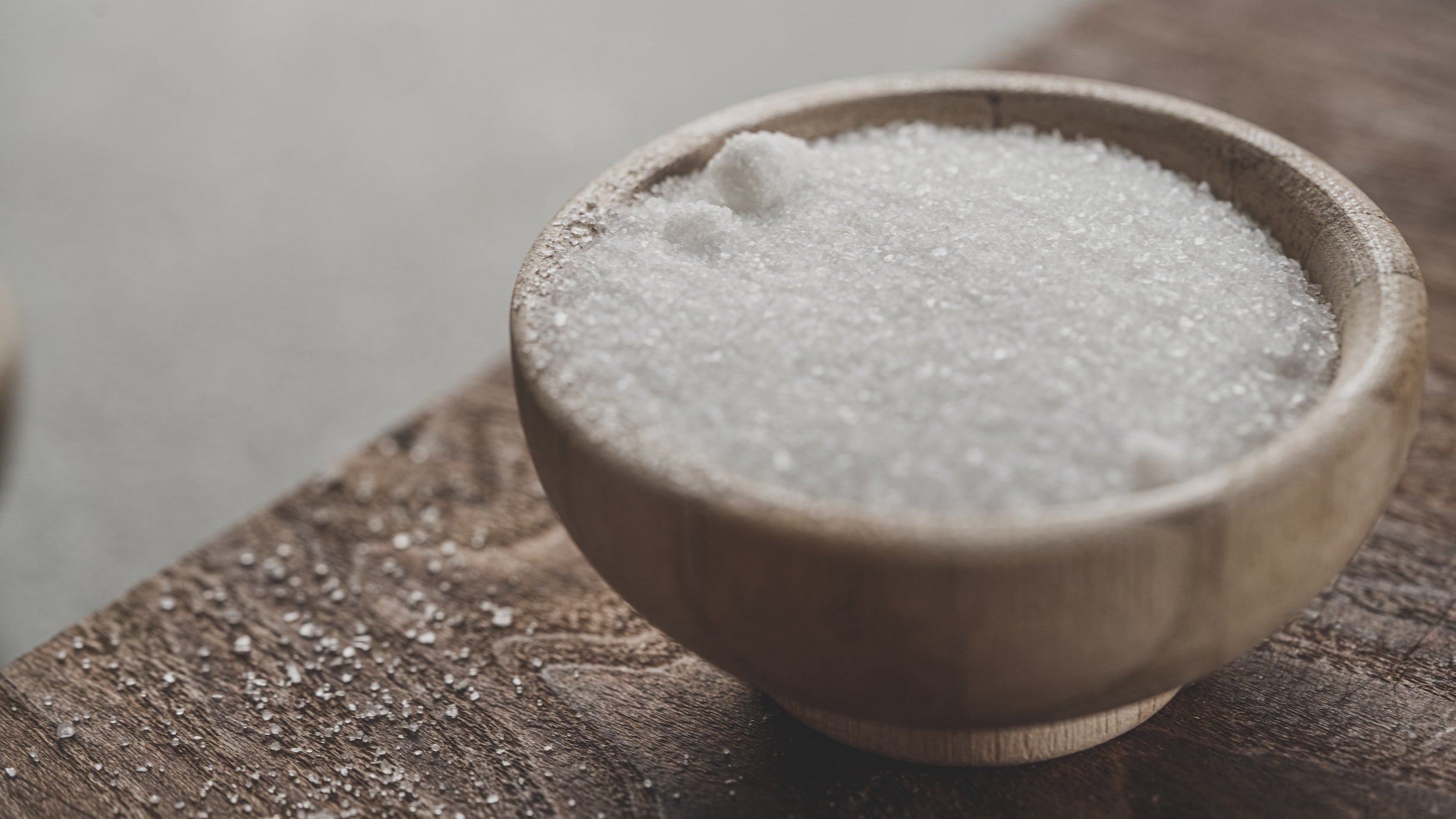
The human pallet is a fascinating tool. We can easily confuse different taste sensations.
Not all wines that seem sweet actually have residual sugar.
High acid, intensely fruity white wines can come across as having sweetness to them, including wines like Riesling, Chenin Blanc, and Grüner Veltliner.
Oak is another chemical mystery.
Special molecules called quercotriterpenosides from toasted oak wine barrels can add the perception of sweetness to the wine.
Oak barrels can act something like an artificial sweetener.
Toasted oak can impart flavors of sweet baking spice, which our brains can interpret as actual sweetness when we’re taking a sip.
Helpful Tip: Go explore this post on the flavors oak adds to wine.
Can You Taste Sweetness in Wine?

Generally speaking, it’s hard to tease out the sweetness level (residual sugar) in a table wine if you are a new wine drinker.
Jargon Alert: “Detection threshold” for wine drinkers refers to the minimum level of a certain characteristic or component in wine that can be perceived by the drinker’s senses. It represents the point at which a person can start to detect and recognize a particular element, like sweetness or acidity, in the wine.
The detection threshold for sweetness, know and residual sugar (or rs) is around two grams per liter if you’re an experienced taster.
That means that most wine drinkers who enjoy wine regularly can pick out sweetness for anything that is above 2 grams per liter.
Below that level, most drinkers can’t detect sugar, though some expert tasters will certainly have superhuman tasting powers.
Did you know that…
Many of the mass market table wines that you’ll find at the grocery store have significantly more residual sugar than 2 g/l.
Labels like Meomi, Yellow Tail, Franzia – all of these wines were made to have perceptible sweetness above 2 g/l.
These wines are made to appeal to a wide audience, and, generally speaking, humans love sugar and sweetness. Certainly, in the United States, we tend to have a soda pop palette.
Dry Wines with Perceptible Sweetness
Many common table wines that you think should be dry are actually off-dry, or even medium-sweet.
These look like your standard wine and come in a normal wine bottle (not a smaller dessert wine bottle). They are typical wines that you find in the store or liquor shop, but they don’t necessarily advertise themselves as off-dry.
Here are a few of the more famous brands and their sugar levels:
- Meiomi Pinot Noir: 15 g/L of residual sugar
- [yellow tail] Shiraz: 8 g/L of residual sugar
- Jam Jar Cabernet Sauvignon: 40 g/L residual sugar
- Franzia Chillable Red: 11 g/L residual sugar
Why Are Some Table Wines Sweet?

Where Does the Sugar Come From in Wine?
If you’re wondering why your wine is sweet, this is a great question. One of the key factors influencing sweetness is the residual sugar content. This residual sugar, or sweetness, can come from three sources:
- Leftover Grape Juice: The winemaker stops fermentation before the yeast have converted all of the sugar into alcohol, leaving some of the grape juice unfermented. Sometimes, the sugar levels in the grape are so high at harvest, that the yeast cannot survive at a higher alcohol level and die off, leaving unfermented grape juice behind. Wines that clock in at 15%-16% ABV may have small amounts of residual sugar left over from incomplete fermentation.
- Adding Back Grape Juice: The winemaker ferments the grape juice to dryness, however, this isn’t the desired style of wine. The winemaker can set aside some of the sweet grape juice before fermentation and add it back to the finished wine right before bottling. This increases the volume of the final wine but can dilute some of the wine’s flavors.
- Grape Juice Concentrate: The winemaker adds a highly extracted and concentrated form of grape juice called Mega Purple (external link) to the final wine. This syrupy concoction enhances the color, mouthfeel, body, and sweetness of the final wine. As you can imagine, Mega Purple is considered something of a scurrilous additive when it comes to winemaking purists but plays an important role in inexpensive wines.
Remember: All of the sweetness you’re tasting your wine is a natural product from grapes – either unfermented grape juice or concentrate.
Sweet Table Wines Pair Well with Spicey Foods
Some table wine styles are traditionally off-dry, for example, Demi-Sec Vouvray or some Rieslings. Off-dry table wines pair beautifully with spicery foods because they can balance out the chili heat.
Helpful Tip: Go check out this post on pairing food and wine basics – a quick guide to get you started.
Off-Dry Table Wines Are Great for New Wine Drinkers
Off-dry table wines are the perfect wines for new wine drinkers. They balance out high acid and grippy, drying tannins, which are new flavor and textural sensations for many new-to-wine-drinkers.
Off-dry table wines play an important role as gateway bottles to the world of wine.
Over time, wine drinkers may find that they enjoy some of the other textual or flavor qualities in the wine besides sugar.
Helpful Tip: Dry wines with zingy acidity and chewy tannins can be an eye-opening counterpoint to a rich, heavy dish, whereas an off-dry wine can make that type of pairing seem almost cloying.
What Regions Make Sweet Wines?
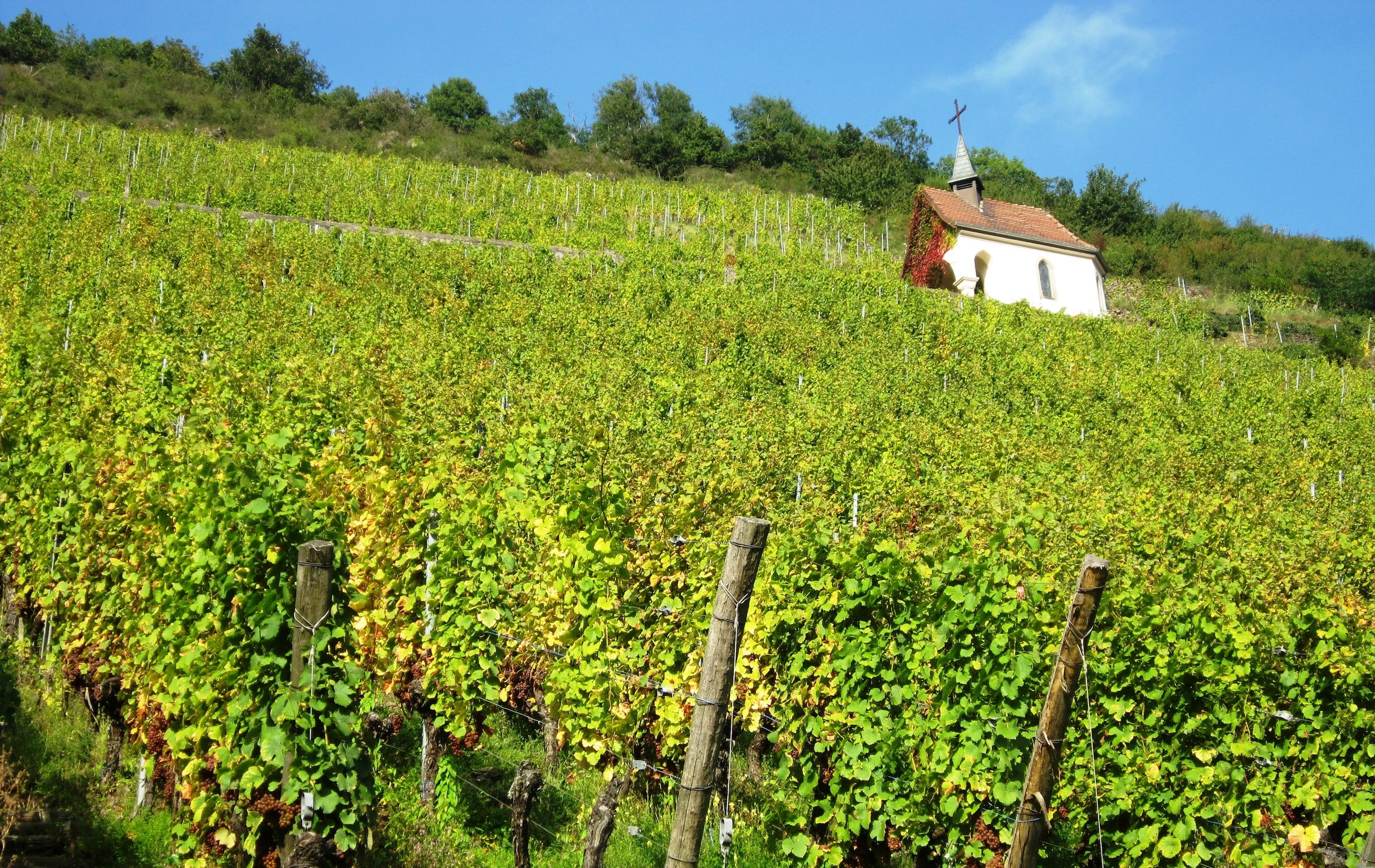
Not all wine is made intentionally sweet to appeal to a broad, mass-market audience. Some wines rely on sugar to balance out acidity (think sweet/sour pairings).
In marginal climates or in poorer growing years, grapes can struggle to ripen leaving them with biting acidity. If the winemaker ferments the wine to dryness, it can be like sipping on a lemon, or an under-ripe sour cherry.
Unpleasant to say the least.
In this case, the winemaker may opt to leave a little bit of sugar in the wine to help give it a rounder mouthfeel and to take off some of the edginess, making it a more balanced bottle.
German Rieslings are famous for having residual sugar and sweetness in them.
In the Mosel region, the marginal growing climate means that grapes can struggle to ripen. Here the producers rely on sweetness to help balance out searing acidity.
Next door in the Rheingau region, the vineyards have greater exposure to sunlight and can ripen fruit more reliably. Wines from this region are often dry, even though they’re still German Rieslings.
Helpful Tip: Go check out this post that will help you figure out how to read a wine label.
This nuance of climate and growing site can have a significant impact on the winemaking traditions and winemaking styles from that region.
Finding Nutritional Information on Wine Labels

Alcoholic beverages (in the US) aren’t required to add nutritional information to their labels outside of the total ABV, so you won’t find information about sugar in your wine.
Increasingly, I’m finding that wines are targeting more health-conscious consumers.
The general population knows that alcohol isn’t great for their health, so savvy marketers put crafty messaging on their bottles with things like ‘Zero Sugar’ or vegan.
Alcohol producers cannot advertise health-related benefits with their products, and they’re walking a fine line.
Remember: If you need nutritional information, look for technical sheets online, or reach out directly to the producer.
Final Thoughts – How to Tell If a Wine Is Sweet
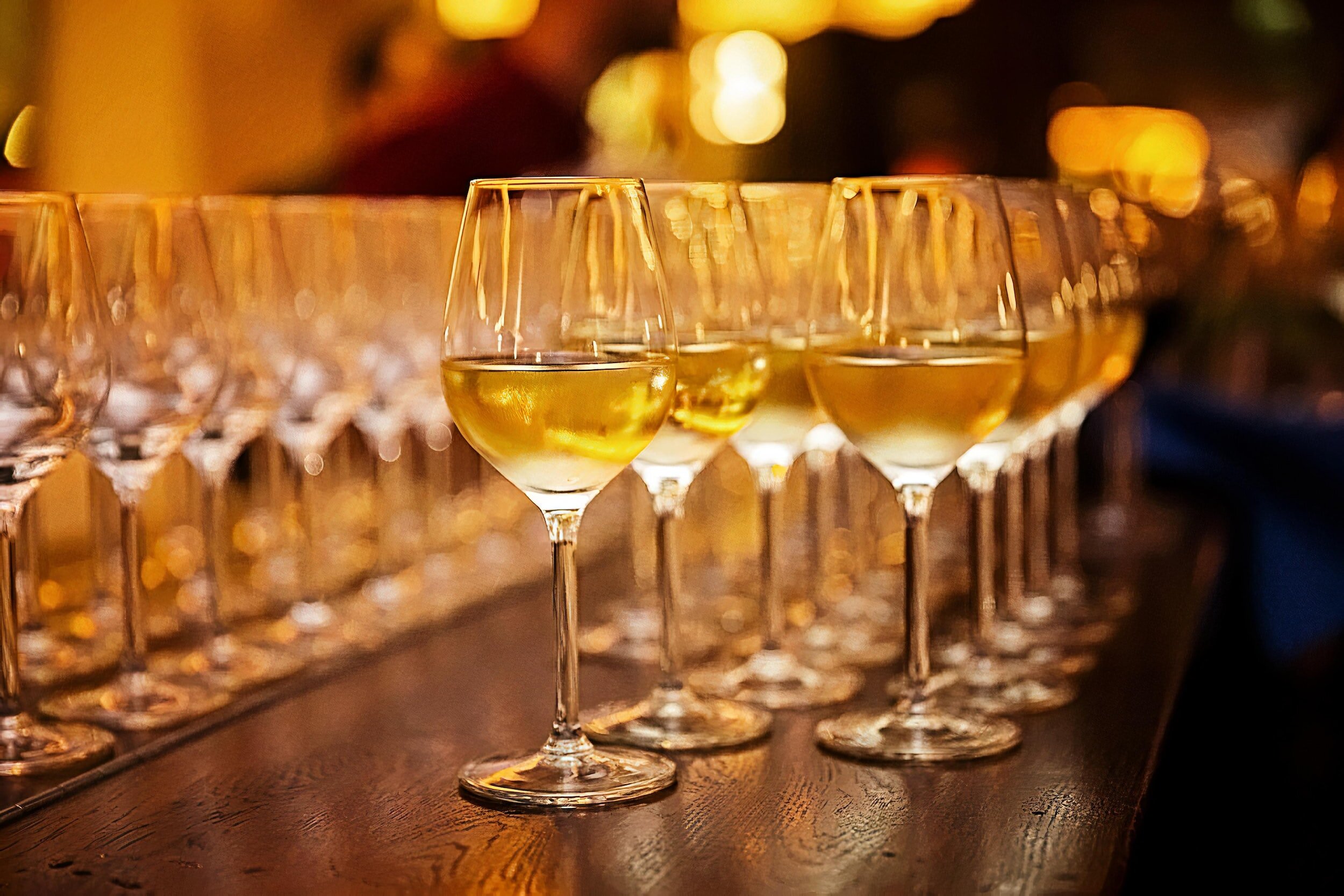
If you’re holding a bottle of wine and trying to tell if it’s sweet, start with the label.
- Look for words like “off-dry” and “medium sweet”.
- Next, look to see if there’s a sweetness scale as an at-a-glance clue.
- Finally, if you can’t find what you need, do a search for the wine’s technical sheet online or reach out to the producer to learn more.
Off-dry and sweeter table wines pair well with spicy foods. They also are the perfect wines for new wine drinkers. Some regions have a tradition of sweet table wines.
Sugar can help balance out high acid or increase perceptions of the wine’s fruitiness, making them delicious to drink.
By using the methods and sweetness indicators mentioned in this guide, you can figure out the sweetness of a wine.
Remember, exploring different wine styles and regions can help expand your wine knowledge and appreciation – which is always fun.
Thirsty for More?
Check out this post that will help you with quick tips to taste unfamiliar wines.
Here’s an overview of just the essentials for food and wine pairing.
If you’re just getting into wine, here’s a post that covers the major wine growing regions around the world and their signature wine styles.
And this post on how to read wine labels is a must-read.




